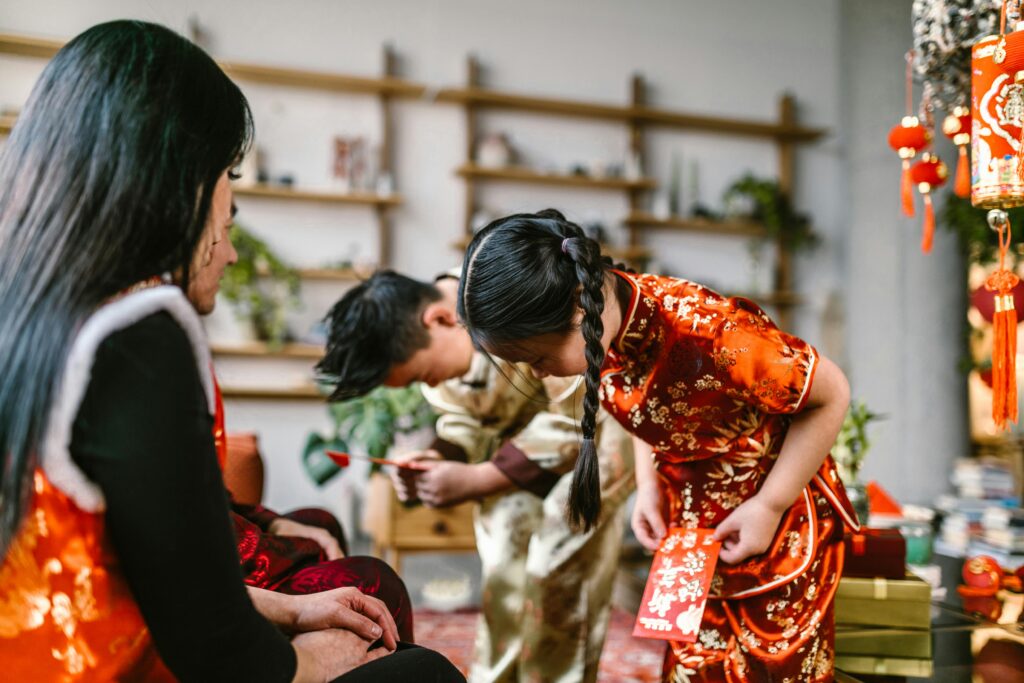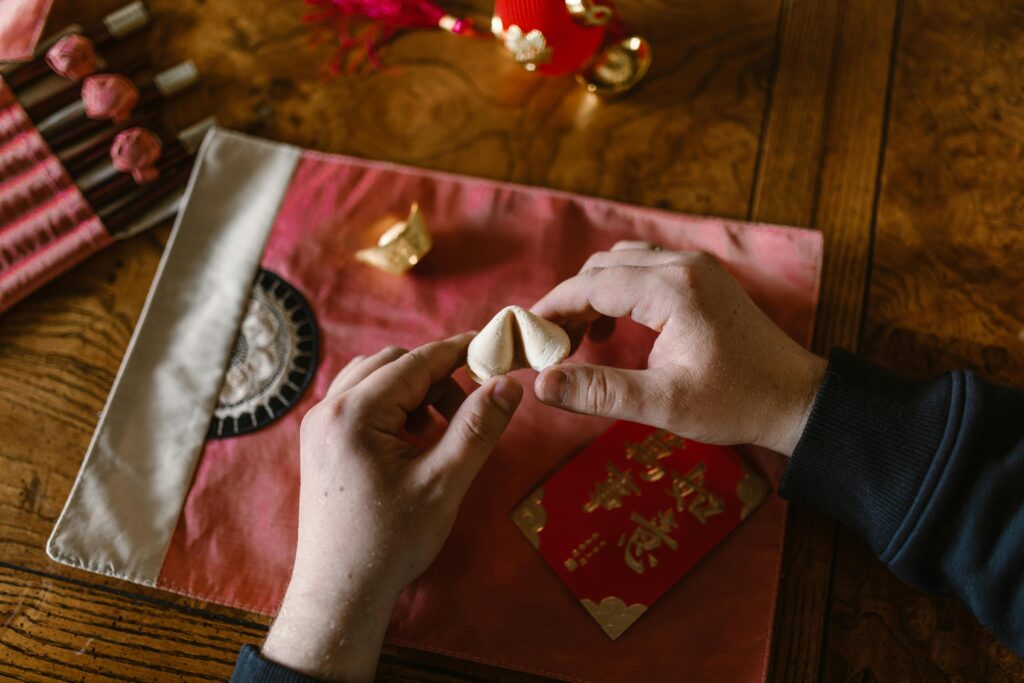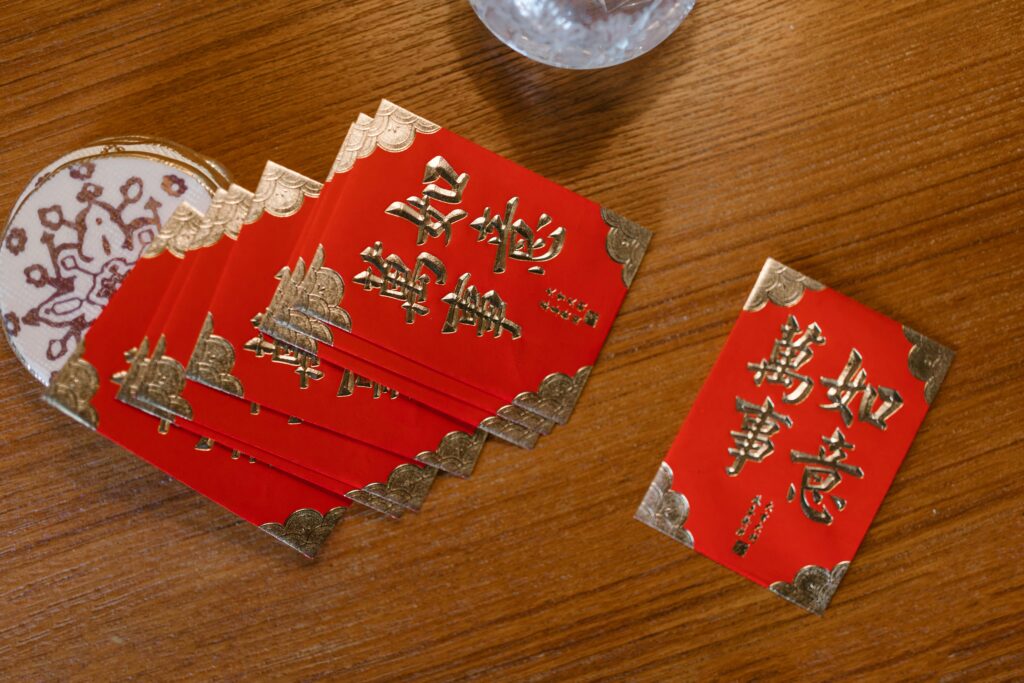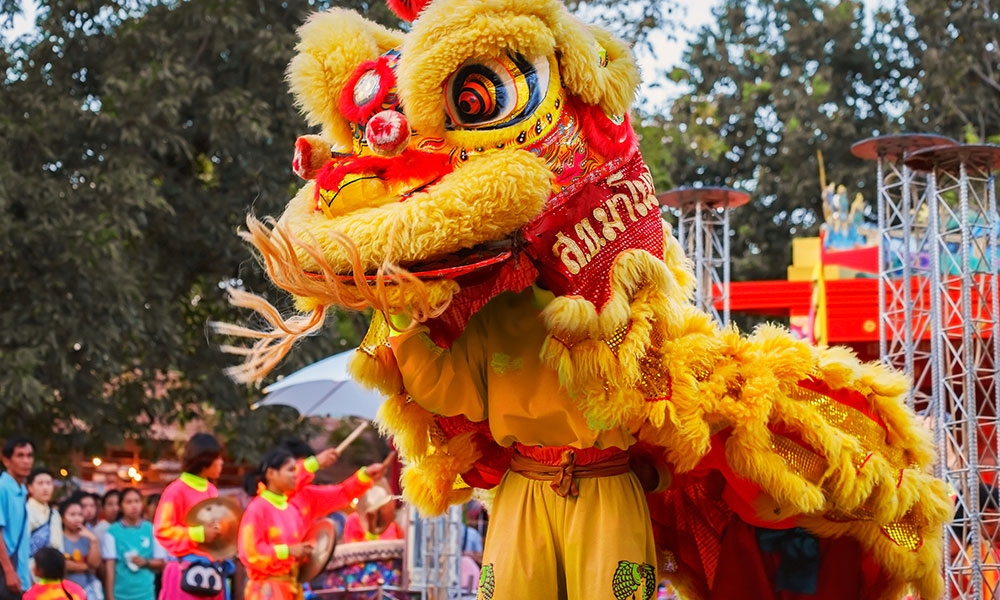In just a few weeks, millions around the globe will welcome the Year of the Wood Snake with spectacular Chinese New Year celebrations. From vibrant dragon dances in Bangkok’s bustling streets to lantern-lit nights in Singapore, this annual event is a time for reunions, joy, and honouring tradition.
The anticipation is palpable as communities prepare with rituals symbolizing luck, renewal, and connection. Whether you’re celebrating in Chiang Rai or halfway across the world, the festival brings a shared appreciation of culture, history, and hope for the year ahead.
The Global Significance of Chinese New Year
Chinese New Year isn’t just a regional celebration; it’s a moment where global communities unite to honour tradition, family, and renewal. The Lunar New Year bridges cultures worldwide, from colourful festivities in bustling cities to intimate family customs in rural areas. Let’s explore its interconnected significance, starting with 2025’s unique Year of the Wood Snake and expanding its cultural impact beyond China.
Understanding the Year of the Wood Snake
2025 welcomes the Year of the Wood Snake, part of the 12-year Chinese zodiac and Five Elements tradition. The Wood Snake represents a unique blend of creativity, adaptability, resourcefulness and intuition. It’s believed to symbolize transformation—just as a snake sheds its skin, the year is seen as an opportunity for growth, renewal, and reinvention.
In Chinese culture, the wood snake is linked to wisdom and strategic thinking. The wood element symbolizes growth, vitality, and stability, creating a balance with the Snake’s typically cunning and mysterious characteristics. Taken Snakeher, 2025 is predicted to encourage introspection and purposeful decision-making, making it a year to forge stronger relationships and align closely with one’s goals.
Horoscope interpretations suggest a year of challenges and opportunities for individuals with varying zodiac signs. For example, the Snake’s influence brings slow progress in careers and relationships. At the same time, flexibility will be important for navigating potential uncertainties. This year serves as a reminder that patience and wisdom lead to growth, much like the Snake’s deliberate movements.
Cultural Importance Across Regions
While Chinese New Year originated in China, its influence has travelled far and wide. Countries such as Vietnam and South Korea have embraced the Lunar New Year, adding their regional customs and traditions to create a rich tapestry of celebrations.
- Vietnam (Tet Festival)
- South Korea (Seollal)
Despite regional differences, there are common threads that unite these New Year celebrations:
- Family reunions—Whether in Ho Chi Minh City or Seoul, the Lunar New Year is centred around spending time with loved ones.
- Symbolic food and decorations – From sticky rice cakes in Vietnam to rice cake soup (Tteokguk) in Korea, food takes on symbolic meanings of prosperity and new beginnings.
- Red envelopes and lucky rituals—In various countries, Exchanging money in red packets symbolizes sharing good fortune and wealth.
These shared practices highlight how different cultures interpret the Lunar New Year uniquely while preserving its essence of community, renewal, and hope.

Through these celebrations worldwide, traditions transcend borders, connecting communities with shared values that honour the heritage and embrace the future. Every lion dance, red envelope, or rice cake carries a story of resilience, adaptability, and a deep appreciation for life’s new beginnings.
Preparations for the 2025 Chinese New Year
As the Year of the Wood Snake approaches, millions worldwide are immersed in preparations for one of the most significant celebrations of the year. These preparations aren’t just about logistics—they symbolize clearing away the past, embracing new beginnings, and invoking fortune for the year ahead. Here’s how traditions like the Laba Festival, symbolic decorations, and cherished family rituals pave the way for a meaningful Chinese New Year.
The Laba Festival and Little Year
Chinese New Year preparations begin well before the official celebrations, with two key dates—Laba (腊八) Festival and Little Year—marking the initial steps.
The Laba Festival, which falls on January 18th, 2025, honours ancestors and signifies the countdown to the Lunar New Year. A hallmark tradition is cooking Laba porridge, a nourishing dish made from grains, beans, nuts, and dried fruits. Families gather to share this meal, reflecting gratitude and unity. It’s believed the porridge carries blessings for health and abundance in the coming year.
Just days later, Little Year (around January 23rd, 20,25) focuses on purification and preparation. Families engage in a thorough house cleaning, known as “sweeping away the dust” (扫尘). This isn’t just about tidying up; it’s a deeply symbolic act to remove bad luck and misfortune from the household. Alongside cleaning, shopping for new clothes, festive foods, and necessary supplies kicks into high gear, ensuring everything is set for a prosperous celebration.
Decorations and Symbolism
Chinese New Year decorations are more than just festive; they teem with symbolism tied to luck, prosperity, and protection. Red is the dominant colour, associated with joy and good fortune.
- Red lanterns: These adorn doorways and streets, symbolizing a bright future.
- Spring couplets: Phrases promoting health and wealth written in gold on red paper are hung on doors to welcome positivity.
- Snake motifs: Since 2025 is the Year of the Wood Snake, snake imagery—often depicted in graceful, flowing forms—is seen on banners and ornaments as a symbol of transformation and stability.
- Paper cuttings: Elaborate red paper designs featuring auspicious patterns (like fish for abundance) decorate windows, believed to ward off evil spirits.
These decorative elements don’t just enhance the festive ambience; they are powerful talismans meant to usher in a year of success and joy.

Reunion Dinners and Red Envelopes
Arguably, the most heartfelt aspect of preparation happens on New Year’s Eve, January 28th, 2025, when families gather for the reunion dinner (年夜饭). This meal is no ordinary feast—it’s an event steeped in tradition and emotion.
The spread often includes symbolic dishes such as:
- Fish (鱼): Representing surplus and plenty for the year ahead.
- Dumplings (饺子): Shaped like ancient Chinese gold ingots, signifying wealth.
- Nian Gao (年糕): A sweet sticky rice cake symbolizing higher achievements.
During the dinner, many families watch the CCTV New Year Gala, an annual program featuring music, dance, and stories highlighting Chinese culture and heritage. For many, it’s not just a meal but a time to reconnect and strengthen family bonds.
Complementing this is the beloved tradition of red envelopes (hongbao), given to children, unmarried individuals, and sometimes elders. These envelopes are filled with money, but their importance lies in the gesture, symbolizing blessings for wealth, happiness, and luck. The bright red envelopes reflect hope and prosperity, marking a joyful moment of giving and receiving.
As families finalize these preparations, the excitement for Chinese New Year crescendos. Every action, from hanging lanterns to boiling dumplings, carries deep meaning, ensuring the new year starts on the most auspicious note possible.
Core Traditions and Customs During the Festival
Chinese New Year is more than just a celebration—it is a profound connection to tradition, family, and community values passed down through generations. The 15-day festival is steeped in meaningful customs, each designed to usher in luck and prosperity for the coming year. Let’s explore the key traditions that define this annual celebration.
Day One: New Beginnings
The first day of the Chinese New Year is all about starting fresh. Homes buzz with excitement as families embrace activities that set the tone for a prosperous year ahead.
- Firecrackers and Fireworks: Bursts of sound and colour fill the sky as firecrackers light up the day. This custom is believed to scare away evil spirits and bad luck, symbolizing a clean slate.
- Wearing New Clothes: Red and brightly coloured garments dominate the day, symbolizing a fresh start, joy, and fortune. The act of wearing new clothes also signifies leaving the past behind.
- Family Greetings: Families exchange heartfelt blessings, wishing one another good health, happiness, and wealth. Elders often give younger family members red envelopes (hongbao) filled with money, symbolizing good luck and a prosperous year.
The energy of Day One sets a festive and hopeful mood, preparing everyone for the days of celebration to follow.
Visitation and Reunions
The community spirit of Chinese New Year truly comes alive from Day Two to Day Seven, with widespread visits and reunions marking these days. It’s a time for reconnecting with loved ones and paying respects to close relations.
- Family Reunions: Extended families gather for meals and bonding, honouring the value of unity. These gatherings often span generations, with elders sharing blessings and stories from the past.
- Visiting Relatives and Friends: Known as bainian, these visits are accompanied by the exchange of symbolic gifts, such as fruits or delicate desserts, to wish one another good fortune. Guests are warmly welcomed with snacks, tea, and vibrant conversations.
- Honouring the Departed: In some families, visiting the graves of ancestors is a tradition during these days, where offerings are made to show respect and gratitude.
This period represents the interconnectedness of families and communities, reinforcing bonds in ways that feel unparalleled.

Lantern Festival: The Grand Finale
The fifteenth and final day of the Chinese New Year—the Lantern Festival—is a breathtaking culmination of celebrations filled with light, joy, and community-wide festivities.
The highlight of the Lantern Festival is the glowing lantern displays illuminating streets and homes. Lanterns of all shapes and sizes, often featuring intricate designs, symbolize people letting go of their past selves and seeking the light of the future. Many families and communities also participate in lantern riddles, a fun and engaging tradition that blends celebration with mental challenges.
- Community Gatherings: This is a day of sociability, with families joining friends and neighbours in parks or public spaces to view lantern exhibitions.
- Tangyuan (Glutinous Rice Balls): A signature treat of this day, tangyuan represents family unity and harmony. Its round shape and sweet filling embody completeness and happiness.
The Lantern Festival’s vibrant atmosphere and universal participation provide a fitting end to the Chinese New Year celebrations, leaving households and communities with positive energy for the year ahead.
Related News:
China’s Hainan Island Showcases Heritage to Celebrate Spring Festival

Geoff Thomas is an award winning journalist known for his sharp insights and no-nonsense reporting style. Over the years he has worked for Reuters and the Canadian Press covering everything from political scandals to human interest stories. He brings a clear and direct approach to his work.














